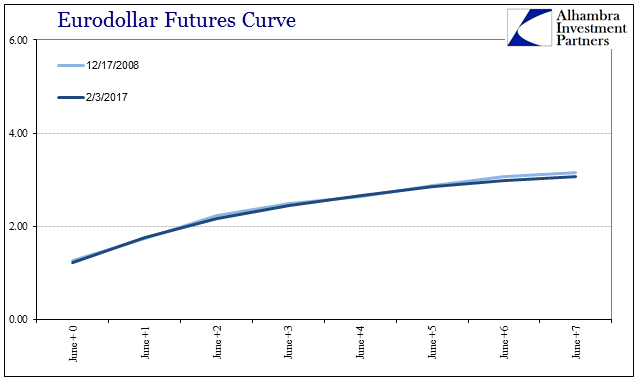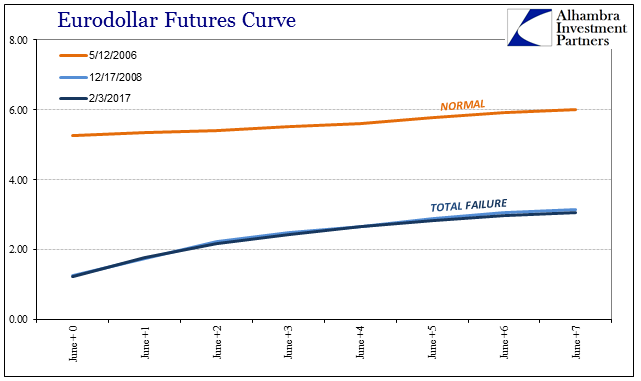QE and ZIRP were monetary experiments, though that is not how they were presented. In public, QE in particular was given a subtext of certainty, that Ben Bernanke’s Fed (or Mario Draghi’s ECB) knew exactly what it took to get the job done and furthermore would get right at it. It was a job that all Americans of all kinds wanted badly for him to succeed at, even if they knew very little of what he was doing or agreed with how he might do it.
In a quirk of far, far more than random curiosity, so much is signified by so little change (shown below). I wrote earlier (subscription required):
The curve today is almost exactly, and I mean almost exactly, the same as it was on December 17, 2008. That date is deeply significant and by comparison then explains almost everything that is missing from “conventional wisdom.” That was the day the FOMC announced QE and ZIRP, which means that after eight years and seven weeks it all accomplished nothing. Nothing. The eurodollar curve is right back where it was, unchanged from perhaps the darkest moment in modern central bank and monetary history. It has been left nowhere near where it was supposed to have been long before now, a problem obviously unsolved by “money printing.”
Given all the hoopla and fuss, four QE’s and so many promises and assurances, even guarantees, there was nothing to them. It is an entirely profound indictment on a lot of things, starting with “our” understanding of global money and its relationship with the global economy. It is all the reasons why we watch Chinese money markets with what may seem weirdly obsessive interest, why we believe in interbank hierarchy still, and also why the media thinks the dollar reflects inflation or Trump or whatever non-causal correlation seems the most plausible on any particular day.
Something to keep in mind as “reflation”, “stimulus”, and whatever else I can put between quotation marks comes up all over again.



Stay In Touch